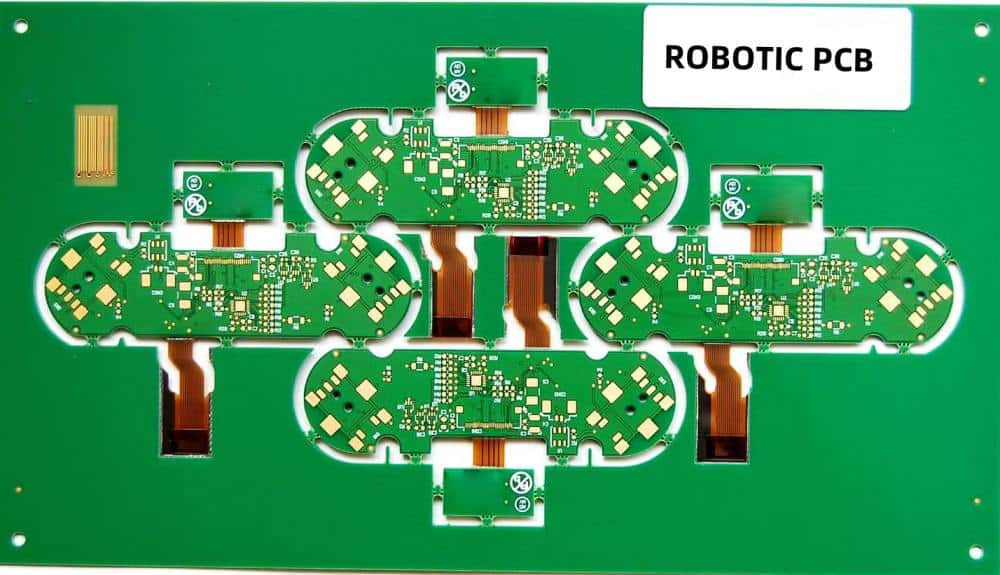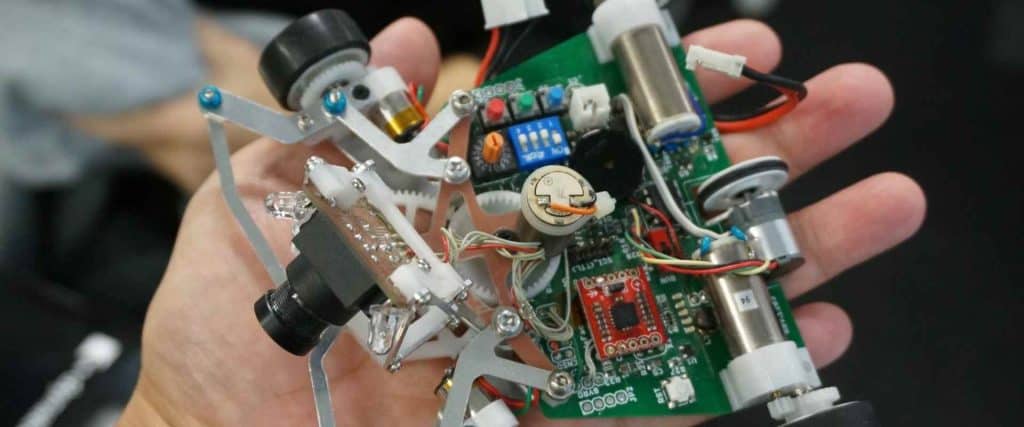The integration of printed circuit boards (PCBs) in robotics has revolutionized the way autonomous systems operate, communicate, and interact with their environments. Robot PCB assembly represents a specialized field within electronics manufacturing that combines the precision demands of robotics with the complexity of modern circuit board design. As robotics applications continue to expand across industries from manufacturing and healthcare to consumer electronics and space exploration, the need for sophisticated, reliable, and efficient robot PCB solutions has never been greater.
Understanding Robot PCB Fundamentals
Robot PCBs differ significantly from conventional circuit boards due to the unique operational requirements of robotic systems. These boards must withstand constant motion, vibration, temperature fluctuations, and electromagnetic interference while maintaining precise control over motors, sensors, and communication systems. The design philosophy behind robot PCB assembly prioritizes durability, signal integrity, and real-time processing capabilities that enable seamless human-robot interaction and autonomous decision-making.
Modern robotics applications demand PCBs that can handle multiple simultaneous functions including sensor data processing, motor control, wireless communication, and power management. This multifaceted approach requires careful consideration of component placement, thermal management, and electrical isolation to prevent interference between different subsystems. The complexity of these requirements has led to the development of specialized design methodologies and manufacturing processes tailored specifically for robotic applications.
Design Considerations for Robotic PCB Systems

The design phase of robot PCB assembly begins with a thorough analysis of the robotic system’s operational requirements. Engineers must consider factors such as power consumption, processing speed, environmental conditions, and mechanical constraints when developing the circuit board architecture. One critical aspect is the selection of microcontrollers and processors that can handle real-time control algorithms while maintaining low power consumption for battery-operated robots.
Signal routing in robot PCBs requires particular attention to minimize electromagnetic interference (EMI) and crosstalk between high-speed digital signals and sensitive analog sensor inputs. The use of ground planes, proper trace routing techniques, and strategic component placement helps maintain signal integrity across the board. Additionally, the integration of power management circuits must be carefully planned to provide stable voltage levels to various subsystems while implementing efficient switching regulators to maximize battery life.
Thermal management becomes increasingly important in compact robotic designs where heat dissipation is limited. The placement of high-power components such as motor drivers and processors must be optimized to prevent thermal coupling and ensure reliable operation across the robot’s operational temperature range. This often involves the use of thermal vias, heat sinks, and copper pour techniques to distribute heat effectively across the PCB.
Component Selection and Integration
The selection of components for robot PCB assembly requires balancing performance, size, cost, and reliability considerations. Microcontrollers specifically designed for robotics applications often feature integrated motor control peripherals, analog-to-digital converters for sensor interfacing, and communication interfaces such as UART, SPI, and I2C. Popular choices include ARM Cortex-M series processors, which offer excellent real-time performance and low power consumption.
Sensor integration represents another crucial aspect of robot PCB design. Modern robots typically incorporate multiple sensor types including accelerometers, gyroscopes, magnetometers, proximity sensors, and cameras. The PCB must provide appropriate analog conditioning circuits, voltage level translation, and noise filtering to ensure accurate sensor readings. Inertial measurement units (IMUs) require careful placement away from magnetic interference sources and proper decoupling to maintain measurement accuracy.
Motor control circuits form the backbone of most robotic systems, requiring robust driver circuits capable of handling the current and voltage requirements of various actuator types. The selection between brushed and brushless motor controllers depends on the specific application requirements, with brushless controllers offering higher efficiency and longer lifespan at the cost of increased complexity and cost.
Manufacturing Processes and Quality Control

The manufacturing of robot PCBs follows specialized processes designed to meet the stringent reliability requirements of robotic applications. Surface mount technology (SMT) assembly has become the standard for most robot PCB manufacturing due to its ability to achieve high component density and excellent mechanical stability. The SMT process involves solder paste application through precision stencils, component placement using high-accuracy pick-and-place machines, and reflow soldering in controlled temperature profiles.
Quality control measures in robot PCB manufacturing include automated optical inspection (AOI) to detect component placement errors, in-circuit testing (ICT) to verify electrical connectivity, and functional testing to ensure proper system operation. These testing procedures are particularly important for robotic applications where field failures can result in costly downtime or safety hazards.
The use of lead-free soldering processes has become standard in robot PCB manufacturing to comply with environmental regulations and ensure long-term reliability. However, the higher processing temperatures required for lead-free soldering can present challenges for temperature-sensitive components, requiring careful process optimization and component selection.
Advanced Technologies in Robot PCB Design
The evolution of robotics has driven the adoption of advanced PCB technologies including flexible and rigid-flexible designs that can accommodate the mechanical constraints of articulated robotic systems. Flexible PCB enable connections between moving parts while maintaining electrical continuity, making them ideal for robotic joints and rotating assemblies.
High-density interconnect (HDI) technology has become increasingly important for compact robotic designs where space is at a premium. HDI techniques such as microvias, embedded components, and sequential build-up processes allow for increased routing density while maintaining signal integrity. This technology is particularly beneficial for mobile robots and drone applications where weight and size constraints are critical.
The integration of wireless communication capabilities into robot PCBs has opened new possibilities for remote control, data logging, and swarm robotics applications. The design of antenna circuits and RF shielding requires specialized knowledge to prevent interference with other electronic systems and ensure reliable communication performance.
Power Management and Energy Efficiency
Power management represents one of the most critical aspects of robot PCB design, particularly for autonomous mobile robots that rely on battery power. Efficient power management circuits must provide stable voltage rails to various subsystems while minimizing power consumption to extend operational time. The use of switching regulators, low-dropout regulators, and power management ICs specifically designed for robotics applications helps optimize energy efficiency.
Battery management systems integrated into robot PCBs monitor cell voltage, current, and temperature to prevent overcharging, over-discharging, and thermal runaway conditions. These systems are essential for ensuring safe operation and maximizing battery lifespan in robotic applications. The implementation of sleep modes and power gating techniques allows robots to reduce power consumption during idle periods while maintaining the ability to respond quickly to external stimuli.
Energy harvesting technologies are increasingly being integrated into robot PCB designs to supplement battery power in specific applications. Solar cells, piezoelectric generators, and thermoelectric devices can provide additional power sources for sensors and low-power circuits, extending the operational range of autonomous robots.
Connectivity and Communication Systems

Modern robot PCBs must support multiple communication protocols to enable interaction with other systems, sensors, and network infrastructure. The integration of wired and wireless communication interfaces requires careful consideration of signal integrity, power consumption, and electromagnetic compatibility. Common communication standards include Ethernet, USB, CAN bus, and various wireless protocols such as Wi-Fi, Bluetooth, and Zigbee.
The design of communication circuits must account for the harsh electromagnetic environment typically encountered in industrial robotic applications. Proper shielding, filtering, and isolation techniques help prevent interference from motor drives and switching power supplies that can disrupt sensitive communication signals.
Real-time communication capabilities are essential for many robotic applications, particularly those involving coordinated motion or safety-critical operations. The implementation of time-sensitive networking protocols and deterministic communication stacks requires specialized hardware and software design considerations.
Testing and Validation Methodologies
The testing and validation of robot PCBs involves comprehensive procedures that verify both electrical functionality and mechanical reliability. Environmental testing includes temperature cycling, vibration testing, and humidity exposure to simulate real-world operating conditions. These tests are particularly important for robots operating in harsh environments such as manufacturing facilities, outdoor applications, or space missions.
Functional testing of robot PCBs requires specialized test fixtures and software that can simulate the full range of robotic operations. This includes testing motor control algorithms, sensor calibration procedures, and communication protocols under various operating conditions. The use of hardware-in-the-loop (HIL) testing systems allows for comprehensive validation of control algorithms before deployment.
Electromagnetic compatibility (EMC) testing ensures that robot PCBs meet regulatory requirements and do not interfere with other electronic systems. This testing is particularly important for robots operating in sensitive environments such as hospitals, laboratories, or near critical infrastructure.
Future Trends and Innovations

The future of robot PCB assembly is being shaped by several emerging technologies and trends. The increasing adoption of artificial intelligence and machine learning in robotics is driving demand for more powerful processing capabilities and specialized AI accelerator chips. These developments require PCB designs that can accommodate high-speed interfaces and provide sufficient power delivery for computational intensive operations.
The miniaturization of robotic systems continues to push the boundaries of PCB design, with the development of three-dimensional circuit architectures and embedded component technologies. These advances enable the creation of smaller, more capable robots while maintaining the functionality and reliability required for practical applications.
The integration of advanced materials such as graphene, carbon nanotubes, and metamaterials into PCB designs offers new possibilities for improving thermal management, reducing weight, and enhancing electromagnetic performance. These materials are particularly promising for aerospace and military robotics applications where performance requirements are most demanding.
Conclusion
Robot PCB assembly represents a rapidly evolving field that combines the precision requirements of robotics with the complexity of modern electronics manufacturing. The successful design and manufacturing of robot PCBs requires a deep understanding of robotic system requirements, advanced PCB technologies, and specialized manufacturing processes. As robotics applications continue to expand across industries, the demand for sophisticated, reliable, and efficient robot PCB solutions will continue to grow, driving innovation in design methodologies, manufacturing processes, and testing procedures. The future of robotics depends heavily on the continued advancement of PCB technologies that can support the increasingly complex requirements of autonomous systems while maintaining the reliability and performance standards essential for practical deployment.




